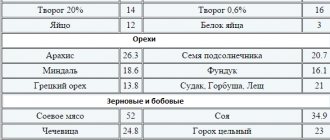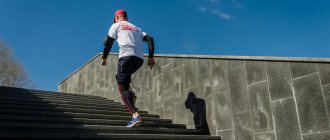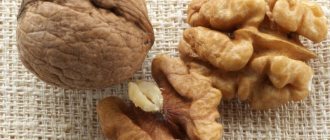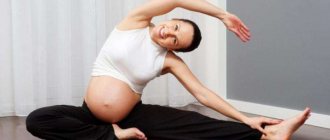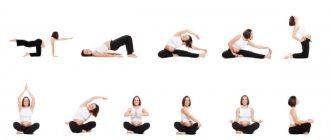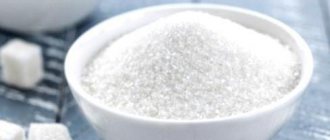Nutrition before running
Proper nutrition before running is 50% of success, because it is very important not to overeat before training, otherwise there will be a lot of heaviness in your stomach, which will not allow you to give even half your best. But you can’t not eat either, so a proper breakfast is the foundation of a good workout.
If you have extensive experience in running training, it is recommended to start training immediately after waking up. In this case, breakfast should consist of proteins that can be found in foods familiar to everyone or in sports nutrition. The ideal dose of protein in the first meal should not exceed an average of 0.6 grams per kilogram of body weight. Taking beta-alanine and arginine also has great benefits. Which affect blood circulation in the muscles and increase the level of fatigue.
If you are not a professional runner, then a protein breakfast combined with vitamins and minerals will be absolutely enough for a run, which will definitely only benefit the body. But still, the main driver of activity remains carbohydrates, which should be taken half an hour before training. Carbohydrates are essential for all types of runners, from weight loss joggers to professional runners.
It is worth considering the fact that simple carbohydrates will not give you the desired effect, but can easily cause harm to the body. Thus, you need to prepare a mixture of juice, food water and sweeteners. Alternatively, you can also eat foods that have rich carbohydrate reserves. These include:
- grapes (grape juice);
- sugar, citrus fruits, dried fruits, jam, honey;
- cream, kefir, milk;
- bread, pasta (from durum wheat);
- porridge: buckwheat, pearl barley, oatmeal.
But don’t forget about foods that are strictly prohibited in the pre-run diet. For example, when a person runs with the goal of losing a couple of kilograms, then the meal should be 1.5 hours before exercise.
Before running, it is recommended to avoid eating the following foods:
- potatoes;
- fatty meat;
- fried foods;
- mushrooms;
Also, in order to protect the kidneys, blood vessels and heart from unnecessary stress, it is necessary to avoid drinking large quantities of liquid before jogging. For example, such as sparkling water. An excellent substitute would be a gainer or sweet tea.
In order to avoid problems with preparing food before training, you can use sports nutrition, which is offered by many well-known companies. With the help of sports nutrition, you can greatly save the time spent on preparing dishes with certain proportions.
Runners should not forget about such an important aspect as fluid balance in the body. You need to understand that the skin cools due to the evaporation of moisture from the surface of the body
When the body is struggling with heat and dehydration, human bodies react differently. This happens because each of us has different physiological and physical characteristics.
There are no specific standards for water consumption when running. The amount you need depends on the following factors:
- genetics (each person’s body produces different amounts of sweat);
- physical fitness (the better your physical condition, the faster fluid loss will occur);
- physical activity (sweat production also depends on increasing physical activity);
- body size (the more an athlete weighs, the more he sweats).
After we have decided on the amount of liquid, it remains to understand what exactly you need to drink. Not everyone likes to drink water, which is why there are many sports drinks to choose from these days. They come in different flavors and are usually in tablet or powder form. Sports drinks will not add energy to the body, but they will definitely save you from extreme heat.
If you don’t quite trust such products, then you can prepare a similar drink yourself. To do this, you need to dilute a glass of orange juice in 250 ml of water. This liquid has the same amount of carbohydrates as purchased energy drinks.
What can you eat 30 minutes before training?
Digestion is a process both chemical and mechanical.
First, you chew, preferably slowly, to sufficiently chop the food, and at this time the necessary enzymes are already released in the stomach. If you don’t have time to pause between meals and training, then most likely you eat quickly, without having time to chew thoroughly and without giving your gastrointestinal tract the opportunity to effectively digest food and absorb all the necessary substances. This results in bloating, constipation or indigestion. For some, this happens already during training.
“Marathon Runner” is on Telegram, VKontakte and Instagram. Join us!
During running, blood flow accelerates - it rushes to the working muscles to deliver oxygen and nutrients to them. At the same time, it continues to saturate the internal organs as usual.
During meals, additional blood volume must flow to the gastrointestinal tract. And then it turns out that the muscles and the digestive system compete for their portion of blood.
By the way, there is a version that it is for this reason that cramps can occur - the muscles do not have enough nutrients, which should be supplied to the blood in time.
This point follows from the previous one. In normal life, supplying muscles accounts for 15-20% of the total blood volume in the body. During training, this figure increases several times. But if you ate a hearty meal and immediately went running, your muscles will not receive the required volume of blood along with oxygen and nutrients, which means they will not respond to the load.
As a result, the effect of the training will be lower than planned. Moreover, when you are full, insulin and serotonin are produced, which will put you into a relaxed, sleepy state.
Heartburn begins
After swallowing, food enters the esophagus, which is a kind of extension of the throat and connects it to the stomach. From the esophagus, food moves to the stomach, passing through the sphincter, which protects the esophagus from the entry of aggressive contents from the stomach.
When running, stomach acids can back up into the esophagus, causing heartburn and belching. The same thing happens if you bend over or do abs exercises after eating.
Doctors recommend an average of 2 hours, but in fact the waiting time between eating and training depends on the foods eaten and their quantity.
Below we provide a table of digestion times for main foods. From it it is easy to understand that fruits, berries and juices are absorbed the fastest. And you will have to wait the longest for a workout after meat and fatty desserts.
Please note that the more you eat, the longer it will take for the food to be digested.
To make it easier to navigate, it’s worth dividing all products into:
- Easily digestible - fast carbohydrates that take up to an hour to digest: fruits, juices, berries.
- Moderately digestible - slow carbohydrates and vegetable fats, digested in 2-3 hours: vegetables, herbs, cereals, bread, cereals, pasta, bananas, dried fruits, milk, avocados.
- Difficult to digest - proteins and animal fats that take more than 3 hours to digest: meat, eggs, fish, seafood, legumes, nuts, seeds, hard cheese, mushrooms.
Sausages, canned food, alcohol, tea, coffee, fast food, baked goods made from white flour, sugar, candies, and chocolate are poorly digestible.
There is an opinion that breakfast is digested faster than lunch. But it is not exactly. Moreover, there are studies with the opposite result, convincing that metabolism accelerates only towards lunch.
For an effective workout, the body needs energy, and it is best to get it from carbohydrates (about 70% of the portion before training), because they reduce fatigue and increase endurance. These should be foods with a low or medium glycemic index, that is, slow carbohydrates: durum wheat pasta, cereals, oatmeal, potatoes. You can add proteins to them and eat it all 1.5-2 hours before training.
If you don’t have that much time, then half an hour before training you should have a snack with carbohydrates with a high glycemic index, that is, foods that are quickly absorbed and provide the required amount of energy. The simplest options are a banana, fruit juice, muesli, toast with peanut butter or jam.
First you need to remember what the task is before you and what kind of training it is. If the goal is to lose weight, and you have no more than 30 minutes to jog, then you can do it on an empty stomach. A number of studies confirm that light training on an empty stomach is more beneficial for burning fat tissue than training after eating. The main thing is, don’t forget about water - a glass “before” is a must.
If there is grueling running work ahead, a snack is necessary. Alternatively, it could be a small portion of some fruit, an energy bar, a couple of spoons of honey, sweet tea or coffee, a gainer, or a smoothie.
Fatty and fried
It will be hardest for you to run after a heavy meal of fatty food, because it takes a long time to digest and interferes with the absorption of proteins and carbohydrates. Eliminate fried, fatty meats and cheeses from your pre-workout menu. Do not go heavy on vegetable fats such as avocado and nuts, as they also take a long time to digest.
Spicy and salty
Spicy food really speeds up metabolism, but at the same time it increases sweating and causes heartburn. And salty absorbs water, thickens the blood and complicates the transport of oxygen to the muscles. Therefore, it is better to forget about sausages, sausages, smoked meats and salty snacks, by the way, and not only before training.
All this is very useful, but before training it can cause bloating and heaviness.
Fast food
You will fill your stomach with it, but you will not receive the nutrients necessary for training. If you really want it, treat yourself to it after your workout. But not often.
Store-bought sauces
Do not top up your pre-run meals with sauces and mayonnaise, as they are high in fat, sugar and flavorings, which is again nothing good for productivity.
Alcohol
Just in case, we remind you that alcoholic drinks are high in calories and lead to uncoordination of movements and dehydration.
AP continues the series of publications about proper and healthy running
Breathing filter
I was surprised to learn that our body produces more than 90 percent of its energy thanks to oxygen entering the body. Most of it enters our body through the lungs.
At rest, a person of average age and weight needs approximately 150-200 milliliters of oxygen per minute, the regional center for medical prevention said. While jogging at a speed of 6-8 kilometers per hour, the body already requires 1-1.5 liters of oxygen per minute.
This means that about 40 liters of air are pumped through the trachea, bronchi and lungs. This “performance” comes from regular training.
— Systematic physical activity can significantly improve the functional potential of our entire respiratory system. But not everything is as simple as it might seem. Due to the heavy load on the lungs and blood vessels, people suffering from respiratory diseases and varicose veins cannot run.
Any physical activity is only beneficial if you remember the four basic rules - consistency, gradualness, regularity and monitoring your well-being,” emphasizes Irina Zhidkova.
For our respiratory system to work normally, our back should be straight while jogging and our gaze directed into the distance. You don’t need to lower your head, but you shouldn’t lift your chin too much either - this will interfere with proper breathing.
Keep your back straight
Sometimes you look at people running past you in the morning: some are slouching, others are leaning forward too much, their eyes fixed on the asphalt, as if they are afraid of tripping. All this interferes with breathing evenly and rhythmically and saturating the body with oxygen while running.
— For our respiratory system to work normally, our back must be straight while jogging and our gaze directed into the distance. You don’t need to lower your head, but you shouldn’t lift your chin too much either - this will interfere with proper breathing, advises the pulmonologist.
— Arms should be bent (no need to clench your hands), movements should be light and natural, and your body should be relaxed. Try to tense only the muscles involved in the movement. Breathing should be clear and rhythmic, but there is no need to focus on breathing.
Otherwise it will definitely go astray.
Note!
Another tip: running with weights is not for beginners. Don't wear a loose jumper or loose sweatpants. The wider the clothing, the greater the air resistance and the greater the load on the body.
When going for a run, you need to dress in something light and tight-fitting, similar to cabbage.
For example, if it’s cool in the morning, then wear a cotton T-shirt or tank top under your T-shirt, which will absorb sweat, and a sleeveless vest on top.
Is it worth running fast?
You need to run at a feasible pace. Just how to determine: have you chosen a feasible load for yourself or should the pace be reduced?
“One of the guidelines from the respiratory system is that you should be able to talk,” the pulmonologist suggested.
— If while jogging or walking at an accelerated pace you can answer some questions without losing your rhythm, then the load is adequate.
If you feel that you are starting to choke, or have a tingling sensation in your side, slow down the pace or start walking quickly. And don’t worry about running for only 10 or 15 minutes during your first workout. After a few weeks of regular training, you will be able to run for half an hour.
Music with a confusing or too fast rhythm is extremely contraindicated. Such musical accompaniment will take away the breath or force a person to subconsciously run much faster than his body can withstand. Such overload is harmful.
Music takes your breath away
Our young people love iPods, some even play sports using headphones. Those who like to listen to music while jogging need to take into account some features.
What you should know about sperm quality
Factors that negatively affect sperm quality
- Ill-conceived diet and nutrition itself.
- Presence of bad habits (drugs, alcohol, smoking).
- Unfavorable environmental factors.
- Low degree of physical activity.
- Wearing trousers and underwear that are too tight, made of dense fabrics, which restrict freedom of movement and overheat the genitals.
- Presence of diseases (primarily hormonal).
So, it was decided to become a father. You need quality sperm. What can be done in this case to improve its quality? In other words, what measures need to be planned for immediate sperm recovery?
Healthy eating should be given priority in practice, not in words. Sperm fluid is well able to be restored under the influence of products that include vitamins B, C, E.
A very important chemical element for the health of a potential dad is zinc. Its dietary sources are pumpkin seeds, dried apricots, nuts, honey, green tea. From celery and parsley, the body can replenish calcium, phosphorus and potassium. Healthy foods for producing active and viable sperm include fresh vegetables and fruits.
It will be good if you plan to take vitamin preparations in combination. What certainly will not help quickly restore sperm are various harmful products: preservatives and dyes, as well as toxic substances contained in plastic packaging of products, which, if stored improperly, can penetrate into the product and then into the man’s body.
Sperm recovers well from regular physical activity. Therefore, plan some kind of physical activity for yourself: running, swimming in the pool, sports training on a home exercise machine or working out in the gym. The ideal conditions for obtaining such a load on the body are with a large amount of fresh air (that is, outside). Properly organized blood circulation will increase the chances of accidental conception. Even when you are at your workplace in a stuffy office environment, try to look for a reason to get up from your chair more often (preferably every hour): bend over, squat, climb the stairs.
It is highly advisable to critically evaluate your own wardrobe regarding trousers and underwear, i.e. all clothing that is worn exclusively on the legs. The testicles are a separate organ outside the body to create the best temperature regime (it should be 2° lower than body temperature) necessary for sperm formation. Therefore, we leave loose-fitting panties, and throw away other fashionable and tight models. By the way, it is the latter that can provoke such a diagnosis as male infertility, as well as factors such as spending a long time in a car seat or under a hot shower (in a hot bath).
Men with chronic illnesses should get advice about how the medications they are taking may affect their fertility. The most common headache pill can significantly worsen spermatogenesis. But antibiotics, hormonal drugs, antihistamines and anti-asthma drugs can play a special role in the fact that sperm is not restored.
Of particular note are medications containing the male hormone testosterone. Often such drugs are prescribed to improve spermatogenesis.
Attention! Taking them can cause the effect of pharmacological castration. It is explained by the fact that in the brain, when the level of male hormone in the blood increases, a signal is generated to transmit to the endocrine and sex glands to stop its production. The concentration of the male hormone in the male gonads for complete sperm formation should be 10-20 times higher than its concentration in the blood, but this is impossible to achieve with pills
The concentration of the male hormone in the male gonads for complete sperm formation should be 10-20 times higher than its concentration in the blood, but this is impossible to maintain with the help of tablets.
httpv://www.youtube.com/watch?v=embed/1dpJqH_Nbjc
x
httpv://www.youtube.com/watch?v=embed/1dpJqH_Nbjc
And less stress. Remember that complete sperm recovery is possible after 3 months.
How long after eating can you do different sports?
Since different sports put different stress on the body, the training requirements may be different. When planning physical activity, you can rely on the following indicative data:
Training in the gym - 3 hours after eating; exercises on the abdominal muscles - time increases even more; breathing exercises can be performed 3 hours after eating, and it is best to do this on an empty stomach.
If you want to lose weight, then eating immediately after training is also not recommended; you need to wait about an hour. And if your goal is weight gain, then you can eat something protein.
How long after eating can you exercise? A very pressing question, especially for newcomers to sports, fitness, and the gym, who have come here in search of an ideal figure.
Unfortunately, not everyone asks this question, but if you study it and follow the recommendations, the effect will come faster and better.
For some reason, all “athletes” believe that if they go to the gym for modern, newfangled fitness programs, then they will have an ideal figure within a week. Here a surprise awaits them, a month later they cry out in disappointment: “Why am I mocking myself? I’m also paying money for it!” Modern trainers do not pay attention to the nutritional issues of their clients, because they believe that this already concerns the development of complex nutrition and no one will do this for free.
And here many make terrible mistakes, because of which they not only don’t see results, but also gain weight, even if they count every calorie they eat.
Harm from running on an empty stomach
Running on an empty stomach in the morning, and throughout the day, is strictly prohibited for people with minimal fat content in their body, especially for athletes who are actively building up lean muscle mass and people suffering from dystrophy.
These restrictions are due to the same morning lack of glycogen reserves, because in the absence of fat, the body will be forced to absorb energy from muscle tissue, destroying your muscles. Muscle destruction gives rise to a phenomenon called catabolism, which increases the production of cortisol, one of the main stress hormones.
People with dystrophy must be especially careful when running on an empty stomach, because the lack of both fat and significant muscle volume can affect the functioning of the cardiovascular system in general and the heart muscle in particular.
This is important. It is not recommended for people with gastrointestinal problems, especially people suffering from stomach ulcers, to practice running before meals. Jogging activates the metabolism, forcing the body to expend an incredible amount of calories, causing a strong appetite. It is the appetite caused by the stress of running, especially in the morning, that promotes the secretion of gastric juice, and if you take into account the fact that the stomach is empty, the juice begins to affect existing ulcer and causes its enlargement. Running on an empty stomach should take place at a calm rhythm, the jogging itself should not last more than 30 minutes
Otherwise, you eliminate all the beneficial benefits, and during regular exhausting exercise without eating beforehand, your body risks entering overtraining, which threatens loss of strength, decreased vitality, surges in blood pressure and an extended recovery period after exercise. This rule applies primarily to people involved in strength training and working in grueling physical work.
It is the appetite caused by stress from running, especially in the morning, that promotes the secretion of gastric juice, and if you take into account the fact that the stomach is empty, the juice begins to affect the existing ulcer and causes it to increase.
Running on an empty stomach should take place at a calm rhythm; the jogging itself should not last more than 30 minutes. Otherwise, you eliminate all the beneficial benefits, and during regular exhausting exercise without eating beforehand, your body risks entering overtraining, which threatens loss of strength, decreased vitality, surges in blood pressure and an extended recovery period after exercise. This rule applies primarily to people involved in strength training and working in grueling physical work.
This is interesting
- How many calories does 30 minutes of running a day burn in our article?
- If you want to lose weight in your legs, you will be interested in our article “How to run properly to lose weight in your legs and thighs?”
Why you shouldn't exercise immediately after eating
You should not exercise after eating, as exercise will be interfered with by discomfort and heaviness in the stomach.
You should not run after eating, because undigested food, being in the stomach, begins to move around it. If your breakfast is not heavy, for example, kefir with pieces of fruit, and your stomach does not bother you, then you can do some physical activity.
When you eat, the hormone serotonin is produced. It makes the body lethargic and sleepy, so physical activity after eating is not recommended. It is difficult to concentrate on exercise when the body is in a relaxed state.
During the digestion of food, insulin is produced. Thanks to this hormone, unused nutrients are deposited in the cells of the body. Exercising after meals is harmful because some of the substances will go into the formation of adipose tissue. A pause between meals and exercise speeds up digestion and weakens insulin secretion.
Is it possible to delay a payment?
It is impossible to be late on a loan payment (according to the standard lending conditions of almost any bank). Depositing funds into an account late will necessarily entail the accrual of interest in the form of penalties, penalties or fines.
It makes no difference whether the client makes the payment an hour later or several days later, the fact of delay has already been recorded.
It is important to know that late repayment of debt can occur for several reasons:
- Intentional delay due to lack of available funds.
- Making a payment through self-service terminals, at Russian Post offices or at the cash desks of other banks on the settlement date.
Due to the fact that many transfers are not carried out instantly, but within 1-3 days, overdue debt may arise, despite the correct date of actual payment. The post office transfers payments to banks even longer – up to 8 working days.
Payment of the debt later than the date specified in the payment schedule.
This way, you can be late for a payment if it falls on the 31st day and there are only 30 days in the month. Borrowers mistakenly assume that payment must be made later than the expected date, most often the next day.
What is best to eat before training?
In order for exercise after meals to be productive, you need to know what you need to eat.
If you're working out intensely to lose weight, you need carbohydrates. They help maintain the required glucose concentration in the blood. Here it is worth understanding the difference between carbohydrates with a high and low glycemic index. If you eat foods with a high GI, you will only increase the concentration of sugar in the blood and will not get positive results. But with foods with a lower GI, everything is different - they just regulate sugar levels without causing spikes.
Healthy carbohydrates
– these are cereals, fruits, vegetables, berries.
Harmful
- sweets, baked goods and the like.
also need to give your body enough protein compounds,
which will prevent the destruction of muscle tissue. Proteins contribute to high-quality satiety for a long time, and the body spends a lot of energy on their absorption, so it is almost impossible to gain weight from them.
But you should not consume foods rich in fats before training. They take a long time to be processed by the body and can increase the load on the digestive system.
Pregnancy tests
To check for sure, most women run to the pharmacy and buy a simple device proudly called a pregnancy test. Yes, yes, this method also refers to probable signs, since there is still an error (albeit small). The most effective are inkjet pregnancy tests - they do not require any preliminary preparation, they can be used at any time of the day. Immersion tests are less effective - firstly, they can only be used in the morning, and secondly, in order to carry out the procedure, in addition to the test strip itself, three minutes of free time and a secluded bathroom, you will also need a glass. In a word, it is not the most convenient device, although it is the most common among its analogues. The point is the low price of the immersion test - the cheapest of them cost only ten to twenty rubles. Immersion tests will give an accurate result only on the eighth or ninth day after conception, while inkjet tests will show whether a woman is pregnant or not already on the third to fifth day.
Reliable methods of determining pregnancy include, of course, medical procedures that are carried out using special devices. First of all, we are talking about the well-known ultrasound examination, that is, ultrasound. With the help of ultrasound, pregnancy can be seen already during the first week of pregnancy. On the seventh to tenth day after conception, the embryo is identified. On the twentieth day, the ultrasound specialist can hear the baby’s heartbeat. As practice has shown, transvaginal ultrasound is much more effective - it is more sensitive and much faster in determining the presence of a fetus in the uterus compared to ultrasound performed through the abdominal wall.
Starting from the sixteenth week of pregnancy, the gynecologist may suggest that a pregnant woman undergo cardiotocography - recording the heartbeat of a growing fetus.
However, at this time, the definition of pregnancy is no longer so important. By this time, the tummy will have grown a little, and the expectant mother will begin to feel the movement of a living creature inside herself. What is noteworthy is that ultrasound and cardiotocography are needed not only to determine the presence of a fetus in the uterus, but also to further monitor the development of the child, to identify the almost exact date of conception and date of birth
All this is undoubtedly very convenient and practical. Of course, sometimes nature goes against all medical forecasts, but this happens quite rarely
What is noteworthy is that ultrasound and cardiotocography are needed not only to determine the presence of a fetus in the uterus, but also to further monitor the development of the child, to identify the almost exact date of conception and date of birth. All this is undoubtedly very convenient and practical. Of course, sometimes nature goes against all medical forecasts, but this happens quite rarely.
What does the time interval depend on?
How long before meals to drink water, everyone decides for themselves. As for the recommendations of nutritionists, here they are quite clear. A simple calculation will help you find out how many hours after eating you can drink water. Digestive processes, on average, take up to 120 minutes. Accordingly, this is exactly how long you will need to wait. But it’s better to start the morning not with hot porridge, but with one or two glasses of clean, unsweetened liquid. This will start the digestion process and satisfy the need for fluid that every body has in the morning.
During the day, how long before meals should you drink water? It is recommended to maintain the recommended half-hour interval whenever possible. But it’s better to wash down your food with warm tea. This drink is not recommended to be consumed on an empty stomach. And in combination with a meal, it will help provide greater comfort when eating dry food that needs additional moistening. For those who adhere to a diet, the drinking regime must be observed especially strictly. Then the question: how much water should you not drink after eating can be solved with maximum health benefits.
A person at any age dreams of a beautiful and fit body. This result can only be achieved through a combination of training and proper nutrition - and this combination must also be correct. The body must not only receive everything it needs, everything must be done on time
And athletes know the importance of the regime, observing it scrupulously
All explanations for this are based on the practical side of the issue. So, by starting classes after eating, you can get:
- Heartburn. Since the digestion process is disrupted, at a minimum, unpleasant sensations appear in the stomach, which can easily intensify to heartburn.
- Vomiting is caused by very dense food, which was eaten immediately before entering the gym, if immediately after that you begin to lift weights or bend over.
- A decrease in the effectiveness of exercise, since immediately after eating a person’s brain receives signals inducing rest, that is, if not taking a nap, then at least wanting to sit. And as a result, the trainee is lazy to perform the exercises at full strength, gets tired too quickly and spends a minimum of effort on a minimum of approaches. Do you want to relax or use your phone? This food makes itself known.
- Preservation of the fat layer. The fact is that after food has entered the stomach, the body produces serotonin, which both relaxes and blocks a process important during training - the breakdown of fats. The result is natural - if the goal of training is to lose weight, you will not be able to achieve it.
- And finally, the process of digesting food becomes difficult, since the muscles “divert” blood from the stomach. The body reacts to this by constricting blood vessels, causing additional difficulties in all body systems, especially the cardiovascular system.
It is definitely not recommended to go to the gym as soon as you get out of bed. Breakfast beforehand is required. If you don’t have time to digest something dense, you can use a little trick: apples or peaches are also food, but they will be digested in 15 minutes. Just don’t take bananas as a pre-workout food - they raise blood pressure, which can cause a severe headache after several approaches.
A hearty lunch means that the workout will begin at least an hour after it, and even better - after a couple of hours. The fact is that this meal consists of different foods - with, accordingly, different digestion times.
The easiest way is to calculate the time depending on the severity of the expected loads: if they are at a high level, then you need to wait three hours, if they are medium - two, if they are low - an hour will be enough.
You also need to focus on your diet: people who eat heavily three times a day should wait three hours, or better yet, more. The time when you can start training will be told by your stomach—more precisely, by the absence of a feeling of heaviness in it.
Fruit pie recipe:
Ingredients: dried berry mixture: 300 g, hot tea: 225 ml, juice of one orange with zest, butter: 50 g, brown sugar: 100 g, egg: 1 pc, self-raising flour: 225 g, Demerara sugar: 4 tablespoons.
Recipe:
1. Place dried berries in a bowl and mix with tea, orange juice and orange zest. Cover with cling film and leave for 4 hours, or preferably overnight.
2. Beat the butter and brown sugar until creamy, then add the egg and flour, thoroughly mix the resulting mixture with the fruit mixture.
3. Grease the mold, place the finished dough in it, level it and sprinkle a thick layer of Demerara sugar on top. Place in the oven preheated to 160-180°C.
4. Bake for about an hour until done. Wait until the pie cools and cut into slices.
In general, when following a healthy diet, it is better to eat foods with a low glycemic index, along with moderate consumption of proteins and fats. Eating this way will allow you to maintain the same good level of energy throughout the day.
If you run early in the morning, it's still worth fueling up before your run.
Let's consider two options.
1. You have a couple of hours before going for a run.
In this case, you can indulge in porridge, toast with eggs, muffins or smoothies. Many people cannot bring themselves to eat something in the morning. And yet, you need it, especially if you have a long distance to run. Try training your body for a morning breakfast.
2. You go for a run as soon as you get up.
You can snack on something very light, but very energetic: a handful of dried fruits or nuts, fresh fruit, a smoothie.
If you still can’t bring yourself to eat at least a banana in the morning, then try increasing the carbohydrate portion of your dinner the night before so that the energy remains in your muscles until the morning.
If you have a long marathon ahead, then 2-4 hours before it you need to eat well. Choose according to your taste:
- pancakes stuffed with fruits and nuts; - oatmeal with milk (regular or soy); - muesli with milk; - whole grain bread with egg; - fruit salad with low-fat Greek yogurt; - muffins with low-fat cottage cheese; - fruit juice, fruit cocktail.
Evening jogging
Many people choose to go jogging in the evening. They help relieve stress after a working day, promote stress relief and good sleep. And food after a run and before it is also very important in this case, because if you are tired and hungry, you will not be able to exercise productively. Quite often, a person returns from a run incredibly hungry and eats everything, which leads to problems with sleep and a lack of effectiveness of runs.
In this case, it is important to adhere to the following recommendations:
- Maintain proper nutrition throughout the day. Eat food often and in small portions - then in the evening you will not feel very hungry.
- You can eat in the evening, but not heavy food, which is stored in fat and causes insomnia.
Also, those who are used to running in the evening are advised to adhere to the following tips:
- Be sure to have breakfast - this is the most important meal of the day. For breakfast you can eat toast, cereal with nuts, berries, low-fat milk, juices and yoghurts.
- Lunch is also important. Eat lean protein meals. Various cocktails of milk drinks, fruits and berries will also be useful in your diet.
- A few hours before your run, you can eat some fruit or an energy bar.
- Dinner should be light. Proper consumption of food in the evening will not lead to fat, but will contribute to the restoration of muscle tissue. The ideal option is something protein and vegetables, fermented milk drinks.
When thinking about what you eat after a run and before a run, keep fluids in mind. Drink enough water throughout the day to help control your appetite. Drink a couple of glasses of water 15-20 minutes before your run and a glass after it.
How long after eating can you play sports or run in the evening? The optimal period is about an hour. But it is also important to focus on your body. Don't overeat, but don't let it deplete either. It's better to eat something light than to starve yourself. To restore energy, you can use special bars or gels.
If you run long distances, your sports nutrition should include at least 50 grams of carbohydrate foods. Consume them after every hour of intense jogging. Special sports supplements can be replaced with healthy sweets - marmalade or dried fruits. They can be used as a quick snack during the day.
Long runs
With longer distances things are a little more complicated. If you have a workout of 75 minutes or more, you can calculate how much you should have in your fuel tank before you start your run. To do this, you need to multiply your weight by 1.1, and then by the number of hours remaining before training.
For example, your weight is 80 kg. 80 × 1.1 = 88. If there is one hour left before the start, then you need to eat 88 grams of carbohydrates (88 × 1 = 88), and if half an hour - then 44 grams (88 × 0.5 = 44).
What might these carbohydrates look like? Like half a bagel (30g carbs) and 8 ounces of sports drink (15g). Or a small bun (25 g) with two tablespoons of your favorite jam or preserves (30 g). You can take a carbohydrate gel and dilute it with water (25 g of carbohydrates), and then add 120 ml of juice or half a banana to this.
And don't forget to bring water and energy bars or gels to snack on during your run.
Diet
For those who play sports, diet is no less important than the quality of food. And you need to know when you can exercise after eating. The answer will depend on the size of your portions. For example, if you eat heavily three times a day, then let the break between eating and training be at least two hours.
This will be enough for the body to absorb what it eats. Those who use fractional meals and eat in small portions can reduce the time between food and exercise to one hour.
Please note that this is not a universal recommendation, as the time of day you exercise is also important. If you train in the morning, you can start training 40 minutes after eating. This is due to the fact that in the first half of the day the body is very efficient, and it absorbs food quite quickly. But keep in mind that it should be light and quickly digestible, otherwise he may not be able to cope during this period.
If you have time restrictions, you can drink a glass of tea or juice instead of breakfast, and start training half an hour later. If classes take place in the afternoon, then try to wait at least 1.5 hours after eating.
Please note that other factors also play a role. For example, the individual characteristics of your body, the type of physical activity, the duration and intensity of training. For example, an athlete who regularly conducts active strength training should eat differently than a girl who easily works out a couple of times a week to maintain her figure.
Another question that interests many people is how much you can eat before training, the goal of which is to lose weight.
Here it is worth remembering the basic principle that allows you to lose weight - you need to expend more energy than you consume. But it is also important not to starve. The diet should be sufficiently complete and balanced to ensure the performance of all systems of your body. If the calorie deficit is too severe, your metabolism will slow down sharply, and you will get the opposite effect, and you will also develop a lot of health problems.
When to exercise - before or after meals?
It all depends on your biorhythms. But in both the first and second cases, a certain amount of time must pass between physical activity and food.
Eating according to science
So, we understand that when running, a lot of calories are spent, they need to be replenished so as not to get sick, weaken and not quit training ahead of time. Therefore, it is necessary to calculate how many calories are needed to keep the body in good shape for training, but without accumulating excess weight.
From the first month of training you should eat more. First, look at the fats. They are necessary for the elasticity of the ligaments, because the load on them has increased significantly. Fatty sea fish or fish oil, nuts should be firmly included in your diet.
If you do recreational jogging no more than twice a week, and your workouts are not intense, you can do without a special diet. And if your goal is to lose weight, you need a special nutrition program. There is a formula that calculates how many calories you should consume at different periods of your life.
We multiply the weight by 26.5. The amount will show what your calorie needs are without wasting extra energy. With a weight of 65 kilograms, basic energy consumption will be 1722.5 calories. This is how much you should consume if you walk calmly and work calmly.
And so you started running. You should add to your base caloric intake as many calories as you burn during training.
If you run at a speed of 8 kilometers per hour, multiply the weight by a factor of 1.2 and by the number of kilometers you run during exercise. The resulting amount is approximately 600 calories. This is how much you burn during a workout.
Now add this value to the base indicator. It will tell you how many calories you should consume on your workout days. In our example, this will be 2320 calories. On days when you don't run, subtract the “training” calories from your final result.
What to do if you didn’t have time to have a snack before training
Breathing filter
Keep your back straight
When is the best time to run?
Another nuance is what time to choose for running: morning or evening? This issue is quite vigorously discussed on various websites by running enthusiasts. There is an opinion that supposedly running in the morning leads to heart attacks. And it has some basis: after all, the body has not yet woken up, and running is a sharp shake-up.
— Every person can answer this question himself if he listens to his body. Here you need to pay attention to your biorhythm. As you know, there are different types of people.
If you are a morning person and get up early and easily, then it is better to go for a run in the morning.
The most important!
And if you are a night owl and get out of bed with great effort in the morning, then why force yourself? It is better for such people to postpone their jogging to the evening, advises Irina Timershaevna.
Load Adequacy Test
The adequacy of the load can be determined using a simple breathing test. Try singing a verse of a rhythmic song to yourself while running or reading any quatrain.
If you don’t lose the rhythm, continue in the same spirit; if you are swallowing air like a fish out of water, then you need to slow down or shorten the training time. Another rule is true for all types of fitness: training should be fun.
Even if at first you don’t want to play sports, but you ran and your mood improved, and you finished the run in a good mood, then the load is adequate.
Immediately after running, you should not drink - not even regular water, much less carbonated water. After significant physical exertion, the heart does not yet have time to calm down sufficiently, and we additionally load it with fluid entering the blood.
Immediately after running, you should not drink - not even regular water, much less carbonated water. Maintain an interval of at least 15 minutes.
The thing is that immediately after significant physical exertion, the heart does not yet have time to calm down sufficiently, and we additionally load it with fluid entering the blood.
However, this rule does not apply to long runs, during which the blood becomes very thick and additional fluid is extremely necessary. The water should be taken gradually in small sips and not very chilled.
Spicy and salty
Jogging at lunchtime
Running instead of lunch is not such a common occurrence in our country. However, there are such people, and they need some advice.
Those who run during their lunch break, if they don't eat and go for a run, can often feel hungry and tired during the workout. All due to the fact that the breakfast that was eaten in the morning by the middle of the day will no longer be felt, and blood sugar drops. Therefore, in order not to increase your breakfast portion, it is better to have a snack while at work.
An hour or two before your run, take a short break to eat something between 100 and 400 calories. Calories and time will vary depending on the number you eat that day and the characteristics of your body. Meals when jogging should be filled with carbohydrates. You can eat:
- energy bars with less than 5% fat;
- sandwich with fruit jam;
- dried fruits with a glass of vegetable juice;
- a serving of oatmeal with skim milk.
If training is at lunch
girl in the gym feels bad because of a short break after eating
There are several explanations and each of them is from practice:
- Heartburn. As a result of disruption of the digestion process, people with gastroenterological diseases experience increased discomfort in the stomach, including heartburn.
- Vomiting is possible if you have eaten just before entering the gym and performed exercises that involve lifting weights or bending down.
- Low effectiveness of exercises. The desire to take a nap or at least sit quietly increases after eating. There is increased fatigue from training, laziness to complete the exercises to the required number of approaches, while they are performed with minimal effort. You may want to stop and talk to someone or check your phone.
- Preservation of subcutaneous fat. After food is ingested, an increased amount of the hormone serotonin is produced. On the one hand, it relaxes the body, and on the other, it blocks the process of fat breakdown. The last point is extremely important if your goal is to lose weight and get your body in good shape.
- Difficulty in digestion - instead of the stomach, blood begins to flow to the muscles, which are under increased stress. The body tries to regulate this by constricting blood vessels. As a result, all tissues and organs suffer, especially the heart and digestive system.
Diet for athletes is no less important than the quality of food. This is why many people are interested in how long after eating to exercise. The answer to this question lies in the size of your portions. For example, you eat heavily three times a day, and in this situation you should start exercising no earlier than a couple of hours later.
This time will be enough for the body to process all the food. People using a fractional diet plan eat more than three times a day, but use small portions. In this situation, training can be carried out 60 minutes after eating.
Note that this recommendation is not universal, since the time of day when you play sports is also quite important. If your workouts are carried out in the morning, then you can start exercising 40 minutes after breakfast. This is due to the fact that in the morning the body is highly efficient and food is processed fairly quickly. However, there is one caveat here - the food consumed is quickly digestible and light.
If you are limited in time and cannot have a normal breakfast, then you can drink a glass of tea or compote and start training after 30 minutes. When classes are scheduled for the afternoon, you should wait at least an hour and a half after taking your food.
When talking about how long after eating to exercise, we should not forget about several other factors: the individual characteristics of the body, the type of physical activity, its duration and intensity. Let's say a marathon runner with a body weight of 70 kilos, who covers long distances every day, should eat differently than a girl who trains only once a week to maintain her figure.
Very often people are interested in the question of how much food can be consumed before an exercise aimed at losing weight. Here you should remember the basic principle under which lipolysis is possible - you need to spend more energy than you receive. However, the energy value of your diet should be sufficient to ensure the performance of all body systems.
We invite you to familiarize yourself with Facial weight loss: exercises, training, exercises for facial muscles. Facial slimming massagers
You must understand that if the calorie deficit turns out to be excessive, your metabolism will slow down dramatically. In this situation, there is no need to talk about any fat burning. No matter what kind of sport or how intensely you do it, with slow metabolic processes the body will not burn fat.
You can offer several options for a healthy and light breakfast.
- Oat or wheat flakes with milk.
- One small banana (you can add low-fat yogurt to it).
- Sandwich made of black bread with lean ham.
- Yogurt with fruit cookies.
- Milkshake with the addition of fresh fruits or berries (can be frozen).
When do you drink?
Antibacterial agents can be taken in two cases: for treatment or for prevention. You will need to take a course of antibacterial agents if an infectious disease is detected. The attending physician will conduct a diagnosis and then prescribe the appropriate type of medication.
If a person is struck by a serious fungal or viral disease and there is a high probability of developing a bacterial infection, antibacterial drugs are used for prevention. They are also used as a prophylactic agent after operations or in cases of reduced immunity. The prescription of medication in such cases is purely individual.
Under no circumstances should you take antibiotics on your own. Sometimes people try to cure a simple cold with them. It is worth understanding that such drugs are only effective against bacteria.
Is it harmful to drink while eating?
Since Soviet times, it has been believed that eating dry food is harmful. Remember the compote that always ended with every lunch in the canteen (whether in a school or a factory)?
But modern doctors no longer agree with this opinion. They say that when a person eats solid food, he needs to take small bites and chew them thoroughly, otherwise they will be difficult to swallow. During long chewing, the body secretes a lot of saliva, which, firstly, helps in the digestion process, and secondly, disinfects food. As a result, the stomach and intestines receive the most processed “dish”, which is absorbed as quickly as possible.
Should a substantial lunch or light snack be accompanied by a glass of water (well, or other drinks - tea, juice, the same compote)? Doctors are sure: no. If gastric secretion is diluted with water, it will not cope well with its main task. This means that the liver and pancreas must “harness” again, producing a new portion of enzymes. This will double the work load on these organs. But if the “supplement” of enzymes is not supplied, it will be even worse: poorly processed food will begin to decompose spontaneously, releasing toxins that poison the body.
NB! The most harm will occur if you drink cold (or even ice) water during meals. There is a myth that this habit helps you lose weight. In fact, this is a double load on the entire intestine, which causes flatulence, nausea, heaviness in the stomach, and in especially advanced cases, gastritis after eating.
What to eat after a run for recovery
Eating a nutritious, healthy meal after training helps you recover and optimize the benefits your body receives from running. That is, you become even stronger, faster and more resilient.
Perrin Brown, a runner and graduate student at Tufts University whose specialty is nutrition, has compiled a list of foods that optimally help the body recover from running training.
What happens to the body during training?
During training, deformation and destruction of muscle fibers begins in our body. Damaged muscle cells release the enzyme creatine kinase (CK) into the blood.
The level of this enzyme in your blood indicates how much your muscles and overall skeleton were used during exercise.
If the level of SC in the blood is high, then you need to pay attention to your diet after training. The essential nutritional element after a run is a large amount of carbohydrates.
Heavy exercise causes your body's glycogen stores to begin to be used up. This, in turn, means that your body will not have enough energy for the process of muscle recovery and growth.
A necessary nutrient after a run is a large amount of carbohydrates. Heavy exercise causes your body's glycogen stores to begin to be used up. This, in turn, means that your body will not have enough energy for the process of muscle recovery and growth.
Therefore, the post-workout meal should contain a large amount of carbohydrates so that the body is provided with the necessary amount of energy and the muscles have time to recover and grow.
Without this carbohydrate fuel, your body will pull protein and fat from your muscles. This means that it will now take longer for the body to recover.
The ratio of carbohydrates to protein in your post-workout diet should be 3:1 or 4:1.
To repair damaged muscles, your body also needs protein, which is made up of amino acids - the building blocks of your muscles. Therefore, it is especially important after training such as running, during which you carry quite an impressive weight on your legs for a long time - yourself.
Many athletes try to avoid fat, but in fact, not having enough fat can hinder your ability to improve your athletic performance. If your workout lasts longer than an hour, your glucose stores are low and your body begins to burn fat to provide the energy it needs.
The most important!
It is very important to pay attention to what type of fat is contained in your products. While saturated and trans fats can be harmful to you, the fatty acids found in certain types of fish (mostly sea fish), for example, play a very important role in helping muscle recovery and oxygen regulation, the production of your body’s “restoration” hormones and immune function. the system as a whole
While saturated and trans fats can be harmful to you, the fatty acids found in certain types of fish (mostly sea fish), for example, play a very important role in helping muscle recovery and oxygen regulation, the production of your body’s “restoration” hormones and immune function. systems as a whole.
In addition to food, adequate hydration of the body is also very important, since during training you lose a lot of fluid, and with it important minerals and vitamins.
Therefore, many athletes and trainers recommend drinking water in small portions during training.
If the workout lasts longer than an hour, your body will need not just water, but water rich in minerals, sodium is especially important.
You can buy special sports drinks for this, which contain all the necessary microelements, or simply release the gas from mineral water and drink it during training. Another one is a mixture of water and concentrated orange juice (100 ml of juice per 1 liter of water) or just slightly salted water.
List of products
- Sandwich made with whole grain bread, peanut butter, honey and bananas.
- Lean chicken with whole grain pasta.
- Hummus and pita bread.
- Dried fruits and nuts.
- Tuna and wheat crackers.
- Sandwich with egg and cheese.
- Greek yogurt with berries.
Difficulty burning fat
Eating before exercise can also suppress the body's ability to use subcutaneous fat during exercise. If the necessary break has been taken after eating, the body releases adrenaline and inhibits insulin secretion.
Insulin is a hormone that causes the body to store nutrients for storage. You should avoid exercising immediately after eating. You must adjust the length of your break individually, depending on the volume of food, its content and, of course, your own abilities.
And this article talks about how to eat properly AFTER a workout!
- How long after eating can a child or adult have an enema?
- How many minutes after eating can you drink?
- How long after strength training can you eat?
- How many hours after eating can you exercise?
Low-Intensity Runner's Diet
With this type of training, there is no need to organize a separate diet. When running at 50% of HR Max (maximum heart rate), the muscles have time to extract energy from the fat layer. Therefore, there is no need for additional energy sources in the form of fast carbohydrates.
Pay more attention to your drinking regime. Not everyone knows that the feeling of heaviness in the legs primarily indicates dehydration of the body. Before starting your workout, make sure that your body is provided with sufficient water. Look at the color of your urine. If it is straw yellow, the fluid level is normal. A darker color indicates a lack of fluid and possible dehydration.
Carbonated drinks and drinks containing caffeine will not help solve the problem of dehydration. Give preference to pure still water or sugar-free squash. 2 hours before the start of your workout, drink a non-nutritive drink in the amount of 3-5 ml/kg BW. You can drink while running, but no more than 200 ml of liquid for every 20 minutes of the race.
If you are preparing for a low-intensity workout, limit your intake of high-sugar foods half an hour to an hour before the start. 30 minutes after entering the body, glucose begins to be stored in the liver in the form of glycogen. As a result, under the influence of insulin, blood glucose levels will naturally decrease. That is, in fact, within an hour, glycogen from the liver does not flow directly to the working muscles, which leads to a decrease in the intensity of work.
On jogging days, the maximum daily requirement for carbohydrates is 3 g/kg BW. Proteins can be consumed 3-4 times a day at 0.25 g/kg BW. Below is a nutrition plan that looks at training options at different times of the day depending on the runner's preferences.
Approximate nutrition plan for a 60-minute LIT (Low Intensity Training)
| Morning workout on an empty stomach | Workout after breakfast | Afternoon workout | Rest days | |
| Breakfast | smoothie with banana and almonds | muesli with blueberries | seasonal fruit smoothie | oatmeal with cinnamon and apple |
| Dinner | beetroot, potato and feta salad | pumpkin cutlets, a piece of smoked cod, green salad with kefir | chickpea soup with cabbage | vegetable salad, omelette with feta cheese and zucchini |
| Afternoon snack | toast with nut butter, apple | 2 oatcakes | a handful of berries, 10-15 pieces of roasted almonds | Fruit skewers with mint |
| Dinner | chicken casseroles, baked fruit | vegetable lasagna, fruit puree | casserole, sausages, cocoa or hot chocolate | baked sea fish fillet |
Digestive problems
As mentioned earlier, exercise after a large meal slows down digestion. More blood flows to working muscles. To compensate for this load, the body constricts blood vessels for actions that are unnecessary at this time, i.e. for digestion or urination, the amount of blood at this moment is limited.
At rest, 15 to 20% of circulating blood passes through the muscles. During exercise, this percentage increases several times. Additionally, when blood is redirected to the muscles and digestion becomes difficult, many people complain of cramps. In some sports, such as swimming or rock climbing, these symptoms can even be dangerous.
What to eat
First of all, you need to understand that all food is divided into four categories - protein, carbohydrate, fatty and too fatty. Each of them is absorbed differently in the human body. What you ate before training will determine how long you can run after eating so as not to feel discomfort in your stomach. Foods rich in carbohydrates are digested very quickly. If you have eaten a serving of fruits or vegetables or drunk juice, then you can start training in 30-40 minutes.
Such food will be an excellent source of energy and will help improve your athletic performance. Protein, found mainly in meat, poultry, eggs and fish, as well as some types of legumes (lentils, beans, etc.) is absorbed by the body in about 2-3 hours. Therefore, after eating such food, it will be more difficult for you to run, since your stomach will be busy digesting. Fatty and excessively fatty foods take more than 3 hours to digest. Nutritionists and fitness experts recommend completely avoiding such foods before jogging. Foods rich in fat are generally not acceptable when playing sports, as they interfere with achieving the desired results, be it gaining muscle mass or, on the contrary, losing weight.
How long after eating can you run?
The permissible period after which you can go for a run is equal to the time it takes the body to digest most of the food received, which means 60 - 120 minutes .
In reality, 1-2 hours is an average and much depends on the food that was consumed. The fattier the food, the more time the body needs to digest it, and vice versa. Individual tolerance to incoming substances also plays a role. For example, someone may metabolize protein faster or slower than another.
If there was a light snack, for example, a banana, then the absorption time is reduced to 30-60 minutes. Conversely, if a cutlet or chicken leg was eaten, then the digestion time can reach 3-4 hours.
